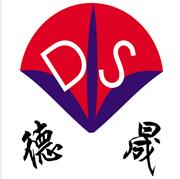- Enzyme(14)
- Carbomer(2)
- Blood collection tube additives(12)
- trinder's reagent(9)
- Biological buffer(21)
- Chemiluminescence reagent(9)
| Hubei xindesheng Material Technology Co., Ltd | |
|---|---|
| Country: | China |
| Tel: | +8618971041571 |
| E-mail: | zjing9632@gmail.com |
| QQ: | 2198447049 |
| Skype: | Chat Now! |
The Advantage and Disadvantage of TRIS Buffer
Release time: 2022-04-07
The Advantage and Disadvantage of TRIS Buffer
Buffer solution is usually a solution composed of weak acid and its conjugate base or weak base and its conjugate acid , which can change PH when a certain amount of other substances are added. The function of Buffer is to adjust the PH of the solution within a limited range so that the acidity of the solution to be tested conforms to the specified range by the analysis. In biochemical experiments and related research work, a large amount of buffer is required to maintain the PH of the testing system. Among them, TRIS and its derivative buffers are widely used in organic synthesis, coatings, fireproof materials, and biochemical and pharmaceutical fields. So, what are the advantages and disadvantages in practical applications?
What is TRIS buffers?
Tris, also known as Tris (Hydroxymethyl) Aminomethane, Tris buffer is widely used, especially in nucleic acid and research experiments related to DNA, it has much more advantages than PBS phosphate buffer. Tris is also an important raw material for the synthesis of another biological buffer, TAPS.The advantages of Tris are very obvious. The PH range of tris buffer is 7-9, and the alkalinity is strong. Using this one buffer can configure PH buffers ranging from acid to alkali. At the same time, because it does not precipitate with metals,and with little interference with biochemical processes,tris buffer is not only widely used as a solvent for nucleic acids and proteins, but also has many other important uses. With low ionic strength of Tris buffer ,it can be used for the formation of intermediate fibers of lamin in C. elegans.Tris is also one of the main components of protein electrophoresis buffer. It forms a buffer system with glycine in the electrophoresis buffer to stabilize the pH during electrophoresis.
There are disadvantages of TRIS buffer need to be noted:
First, the PH of TRIS buffer is greatly affected by concentration;
Second, the effect of TRIS buffer is changed by temperature,for example, at room temperature of 25°C, the PH of TRIS buffer is 7.8,but 8.4 when it’s reached at 4 °C and 7.4 at 37°C. Therefore, when the buffer is deployed at 4°C,but the test temperature is at 37°C, the results of its hydrogen ion concentration will be increase tenfold.
At last, the buffering capacity is poor when the PH is lower than 7.5.
Several normal TRIS-derived buffers
TBS buffer is mainly composed of Tris, sodium chloride, BSA, preservatives, etc.The PH of TBS buffer is 7.4. It is an isotonic buffered saline solution commonly used in biology, such as experiments in immunohistochemistry, situ hybridization, enzyme-linked immunosorbent assay. And washing non-specifically bound antibodies in western blot testing.
TBS buffer is a salt buffer made by isotonic salt solution and TRIS-HCL buffer,mainly composed of TRIS-HCL, NaCl, tween20.The suitable PH range is 7.2-7.5.
TE buffer is a kind of electrophoresis buffer,prepared by TRIS and EDTA. The PH is 8.0. It is mainly used to dissolve nucleic acid, and store DNA and RNA stably.
TAE buffer is a buffer composed of Tris, acetic acid and EDTA. The PH range is 7.2-8.4. It’s a buffer widely used for short-term electrophoresis of large fragments of DNA.
TBE buffer is a solution composed of Tris base, boric acid and EDTA (ethylenediaminetetraacetic acid). TBE buffer is commonly applied in agarose gel electrophoresis to analyze DNA products resulting from PCR amplification, DNA purification protocols, or DNA cloning.
Hubei Xindesheng Material Co.,ltd is a high-tech company specializing in the research and development, production and sales of biological buffers, blood collection tube additives, chemiluminescence reagents and luminescent substrates.With seventeen years of rapid development, Desheng has a large R&D team and experimental base.We’ve developed a series of biological buffers including TRIS, HEPES, TAPS, MOPS, CAPS, BICINE, EPPS, PIPES and so on. It’s not only have a large market share in the domestic market, but also have been sold to dozens of countries around the world. We’ve established long-term and stable cooperation with many large-scale biomedical technology enterprises.
For more information, pls contact visit our website.http://www.whdsbio.cn/product/13.htm

